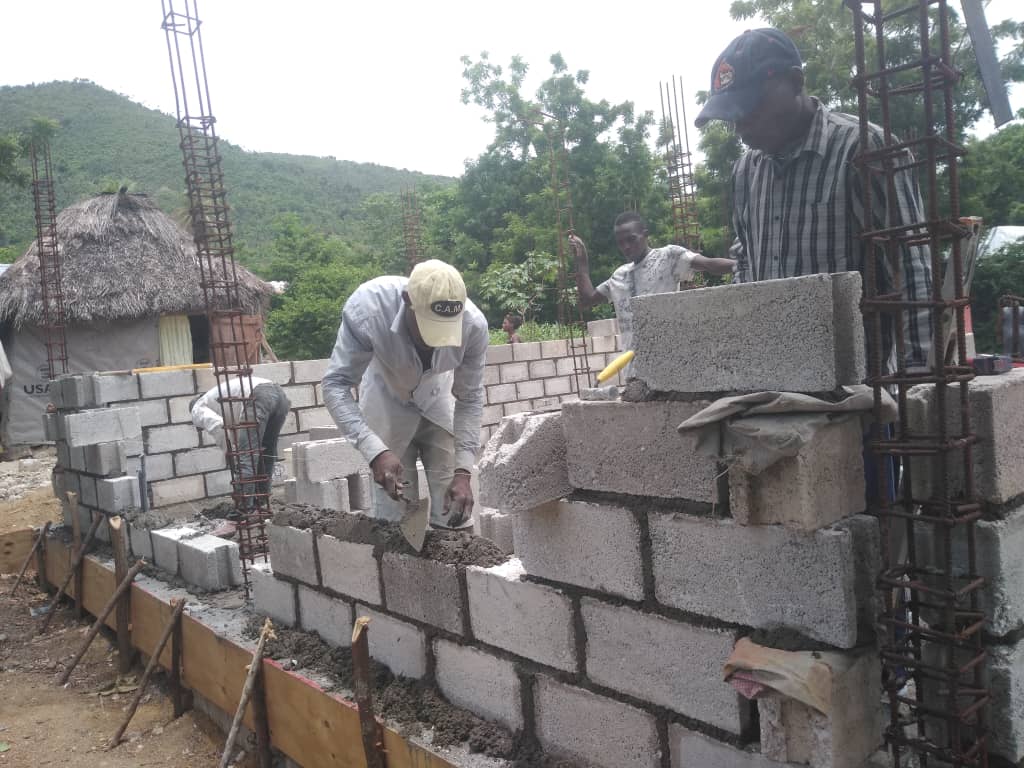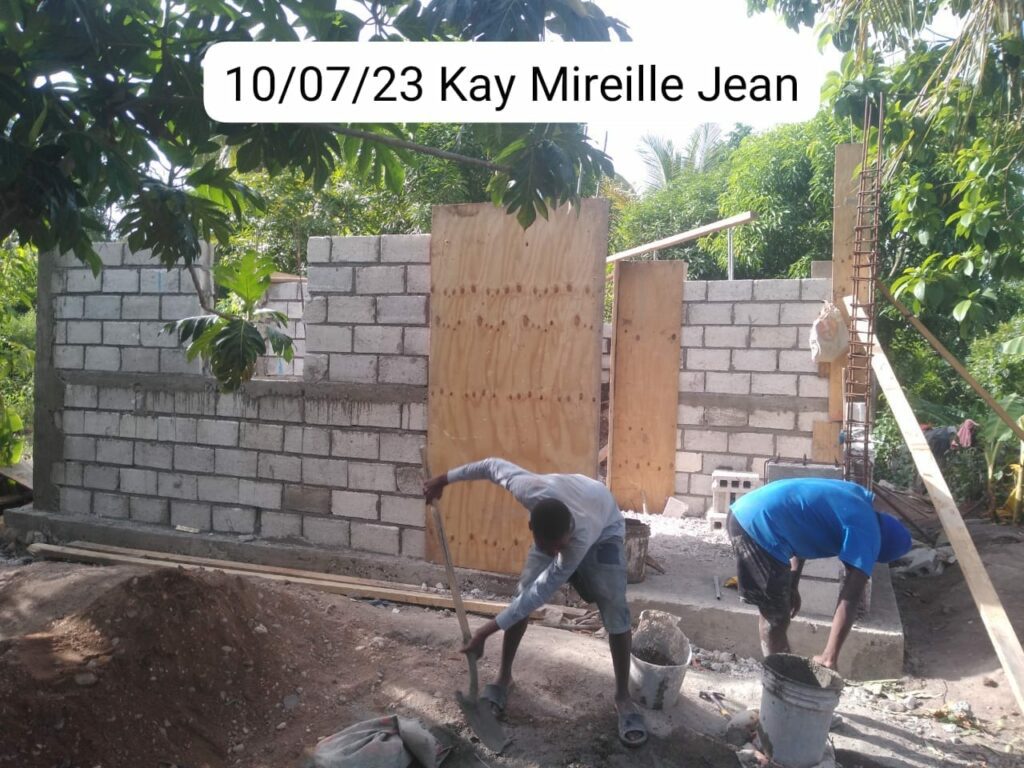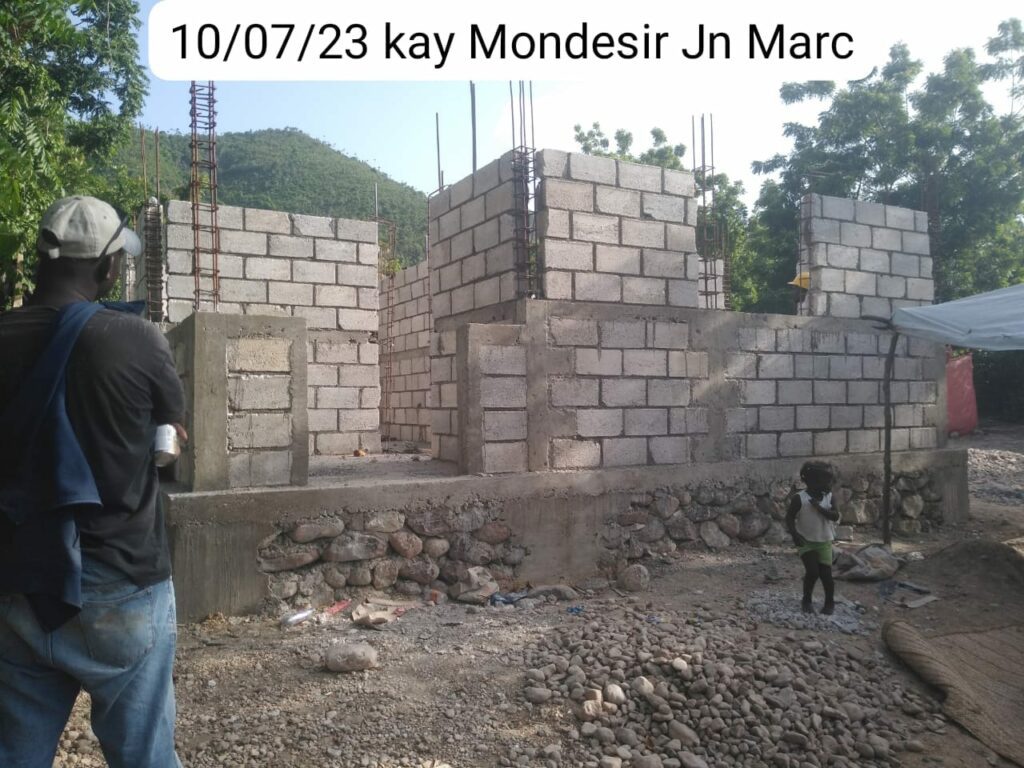By the Institut de Technologie et d’Animation, Haiti


The magnitude 7.2 earthquake that struck Haiti on August 14, 2021, killed over 2,200 people, injured more than 12,000 and damaged or destroyed some 137,500 buildings. Canadians’ generous response to the appeal for donations launched by Development and Peace ― Caritas Canada enabled our partners to spring into action immediately. Additional support from the Roncalli International Foundation and Quebec’s Ministry of International Relations and the Francophonie, allowed our partners to broaden their efforts beyond providing lifesaving emergency aid to facilitating longer-term recovery efforts.
This article, reproduced with permission from the French original on the website of the Institut de Technologie et d’Animation (ITECA), is about one such effort: the construction of new, earthquake-resistant houses. Our partnership with ITECA on such reconstruction projects has a long and proven track record.
The mission of the Institut de Technologie et d’Animation (ITECA) is to support farmers in their collective struggles to change in their living conditions in line with their interests. With a vision of transforming the political and socioeconomic reality of farmers by helping them emerge as collective actors, ITECA focuses on farmers’ associations grouped into platforms and producers’ cooperatives.
ITECA’s activities focus on two areas: rural development that supports the farmers’ movement by, among other things, stimulating the self-organization and structuration of rural and farming communities; and risk and disaster management, including support for emergency and recovery activities or post-emergency rehabilitation that supports farming communities’ efforts.
On August 14, 2021, a magnitude 7.2 earthquake caused significant loss of life and damage in Haiti’s southern departments. The earthquake exacerbated the already difficult socioeconomic conditions of local families. Some 130,000 houses collapsed, and others were damaged. In addition to this, recent sociopolitical crises and the effects of climate change (the disruption of the seasons, irregular rainfall, etc.) are major hazards impacting the lives of farmers.
In response to this disaster, ITECA designed and launched the PARECOM program to support recovery and reconstruction among farming communities in five communes― Aquin, Cavaillon, Cayes, Maniche and Saint-Louis du Sud―in the South Department1. It includes the acquisition and distribution of seeds, farming tools, fruit and forestry saplings; the establishment of agroforestry gardens, market gardens and rice fields; and support for the implementation of anti-erosion devices through agricultural campaigns.
The PARECOM program also includes Tèt Ansanm, a pilot project for rebuilding 40 houses for 40 farming families. This project seeks to sustainably reduce the vulnerability of the people of Cavaillon, which ranks among the communes of the South Department most affected by the August 2021 earthquake.
The Tèt Ansanm project is progressing despite the constraints and difficulties posed by the current political and security crisis in Haiti. Through it, ITECA and its partners intend to provide concrete support for the rehousing of farming families in Cavaillon whose homes were considerably affected and destroyed by the earthquake.












In 2023, ITECA again renews its firm commitment to stand by peasant communities, especially in the South Department. ITECA remains committed to the idea that supporting farmers in their struggles and grievances is the cornerstone of rural community development in Haiti.
The Tèt Ansanm component of the PARECOM program is supported by the Agence Française de Développement (AFD); Development and Peace and the Roncalli Foundation; and the Fondasyon Konesans ak Libète (FOKAL).
- Communes are the Haitian equivalents of municipalities. Haiti’s 10 departments are divided into 42 arrondissements, which are divided into 144 communes and then into 571 communal sections.

